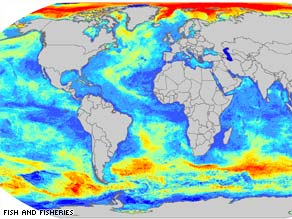I have suddenly become interested in the descent into hell as a metaphor for the descent of humankind from peak activity to tribalism. I am not a big fan of the descent theory either. It seems like commercial activity and traveling are universal and have gone on since the beginning of time. It is true that certain forms of economic organization have come and gone. But it seems to me that it universally accepted education that comes and goes. Mainly that is because the things we know are true are constantly evolving. Like he said in Men in Black:
http://www.youtube.com/watch?v=sJvl5fnB-bU&feature=PlayList&p=41D6FF8997B79F88&index=3
Anyway, the difference between “hell in a hand basket” and “hell bound train” is that the basket metaphor seems almost leisurely and the train seems to move a lot faster. As far as origins:
http://everything2.com/title/The%2520Hell-Bound%2520Train
One long poem or:
http://www.youtube.com/watch?v=qlqqeobOJvg
One long song:
http://tomtrumpinski.com/Tom_Trumpinski/Books_&_Stories.html
One long book.
Nonetheless you have to admit that it can’t predate the invention of the actual train itself. Why worry about such things? Because the idea that Illinois shall soon have sub Trobical weather is just simply revolting. But according to this it is happening faster than even the “extremists” thought:
http://e360.yale.edu/content/feature.msp?id=2166
30 Jun 2009: Analysis
Report Gives Sobering View
Of Warming’s Impact on U.S.
A new U.S. government report paints a disturbing picture of the current and future effects of climate change and offers a glimpse of what the nation’s climate will be like by century’s end
For anyone wondering whether climate change has already hit the United States, a recent U.S. government report says it has — and in a big way.
Witness these trends: In the northeastern U.S., winter temperatures have increased by 4 degrees F since 1970; in the Pacific Northwest, the depth of the Cascade Mountain snowpack on April 1 has declined by 25 percent over the last half century, while spring runoff from the Cascades now occurs nearly a month earlier than 50 years ago; and in Alaska, winter temperatures have increased a stunning 6.3 degrees F in the last 50 years.
Those are just some of the sobering signs of rapid warming spelled out this month in a new report by a U.S. government body that almost no one has heard of: the United States Global Change Research Program (USGCR), which by law is required to report to Congress every ten years on the causes, effects, and possible responses to climate change in the U.S.
If the changes that the U.S. already has experienced make you uneasy, then perhaps you shouldn’t read the the downloadable document itself: It makes quite clear that if the U.S. and the world do little or nothing to slow greenhouse gas emissions, then the climate in the U.S. will be far hotter — and decidedly unpleasant — by the end of this century.
For those inclined to dismiss the USGCR’s report, it should be noted that the group’s scientific pedigree is impeccable. The study is a joint effort of the departments of Energy, Commerce, Defense, State, Interior, Transportation, Health and Human Services, and Agriculture — plus the Environmental Protection Agency, NASA, the Smithsonian Institution, the National Science Foundation, and the Agency for International Development.
The report, which includes new material not contained in the 2007 report
U.S. Global Change Research Program
of the Intergovernmental Panel on Climate Change, brings climate change down to the level where people live. For each region of the U.S., the report describes some of the changes that have already been observed, then looks at what’s likely to happen under both a low-emissions scenario (in which emissions of greenhouse gases are cut substantially) and a high-emissions scenario (where the world pretty much stays on the course it’s now following).
Either way, the authors say, significant changes are coming. Substantial emissions cuts are under active debate, but they remain hypothetical so far; the highlights cited here will therefore focus on the business-as-usual scenario — not in order to be alarmist, but to stay in the realm of the concrete.
:}
I included all that I did just so I could include the cool map of Illinois. Read the rest it is really frightening.
:}


 Robin Bell, Ken Caldera, Bill Easterling, Stephen Schneider
Robin Bell, Ken Caldera, Bill Easterling, Stephen Schneider












